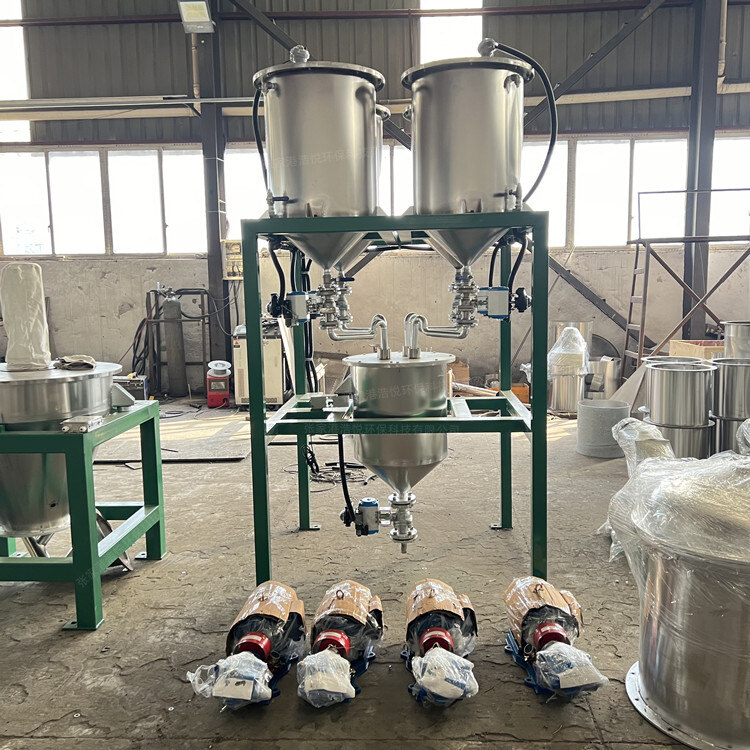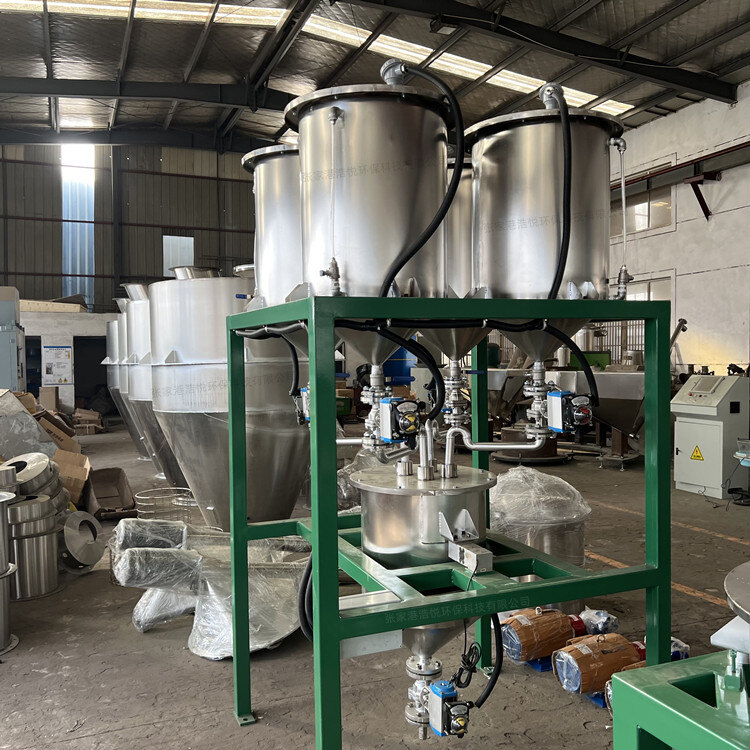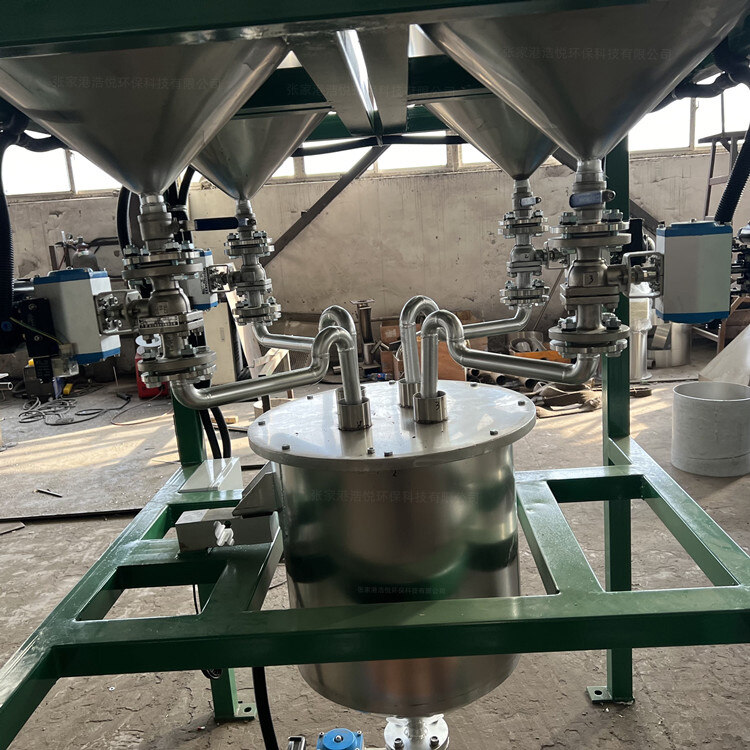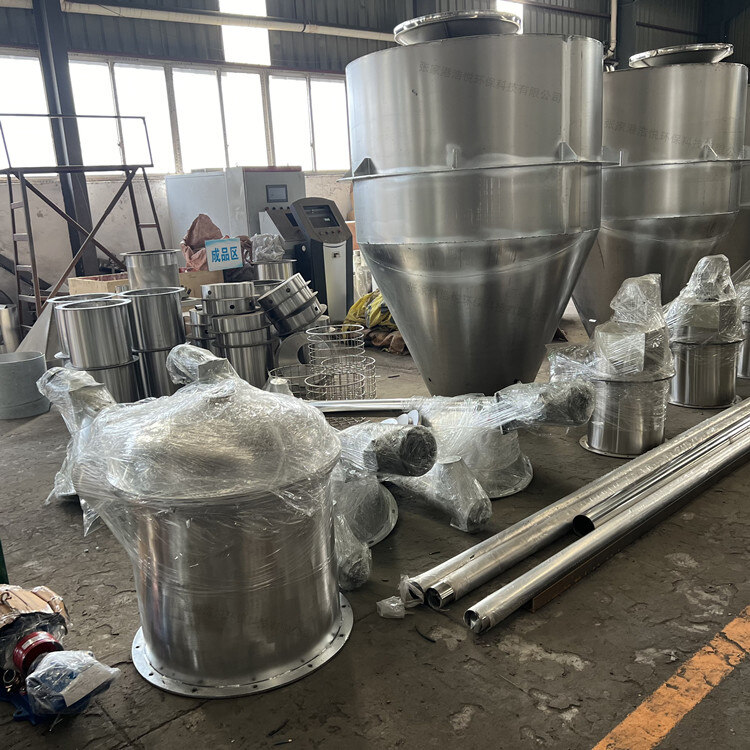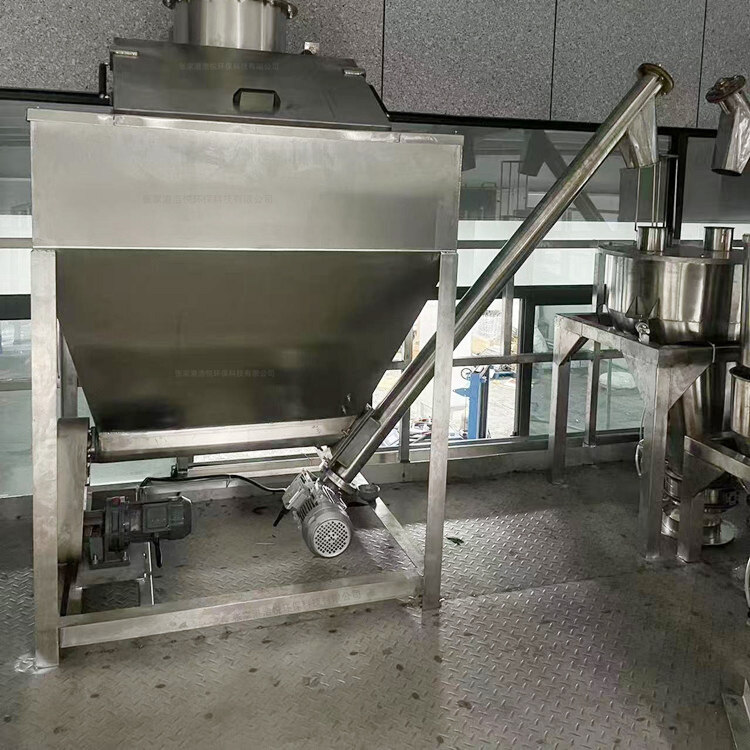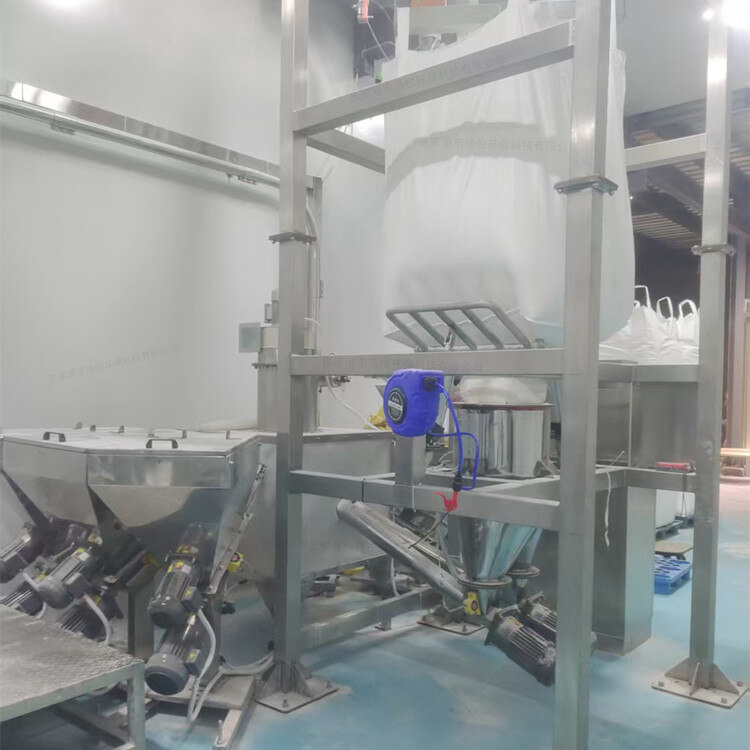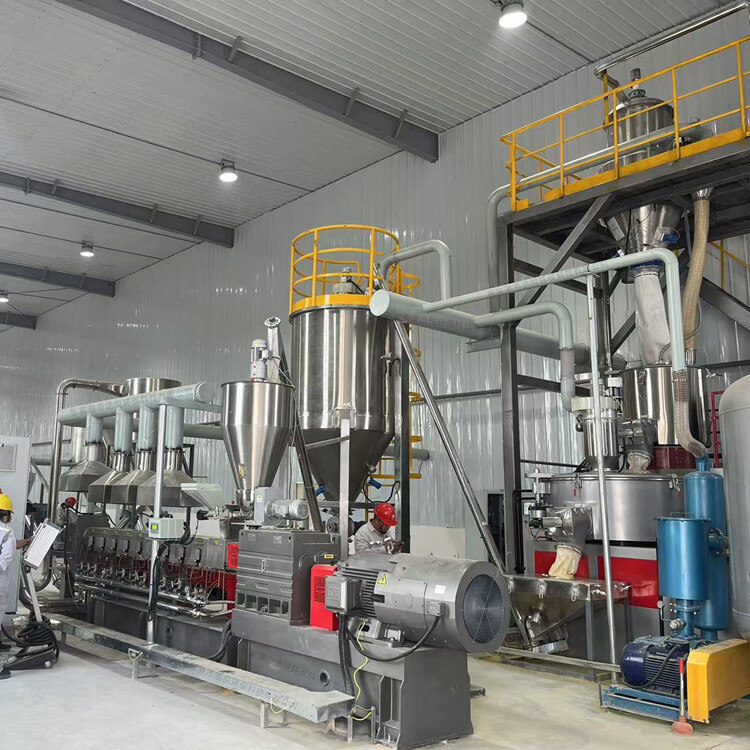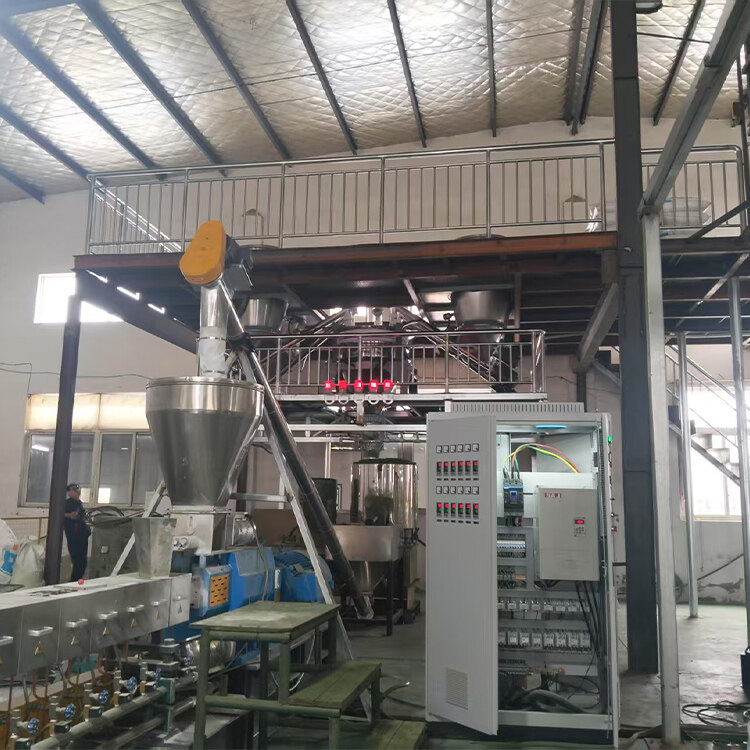- Introduction to automatic batching machine and fully automatic batching machine equipment
- The powder metering system tells you about the introduction of the mixing and drying machine
- 1000kg vacuum feeding machine
- Fully automatic small material batching system
- Research on Innovation of Automatic Weighing Machine Technology
- Design and operation of automatic batching system using PLC, industrial computer and frequency converter
Liquid batching machine, liquid metering formula machine
- Category:Batching Plant
- Hits:131次
- Release Date:2025-06-30
- Share:
- Inquiry
- Details
In modern industrial production, from the preparation of food and beverages to the synthesis of fine chemical products, the precise ratio of liquid materials is a key link in ensuring product quality and production efficiency. Liquid batching machines and liquid metering formula machines are specialized equipment designed for this purpose. They achieve precise metering, proportioning, and mixing of different liquid materials through advanced technology and precise design. Next, we will provide a detailed introduction to these two types of devices from the aspects of device structure, working principle, core technology, application scenarios, and development trends.
1、 Basic structure and composition of equipment
Liquid batching machines and liquid metering formula machines typically consist of five core components: material storage unit, metering unit, conveying unit, control system, and mixing unit.
(1) Material storage unit
This unit is responsible for storing various liquid materials to be mixed. According to the characteristics of the material, the material and design of the storage container may vary. For corrosive liquids, such as acid-base solutions in chemical production, corrosion-resistant stainless steel or polytetrafluoroethylene containers should be used; For temperature sensitive liquids, such as certain biological agents, insulated storage tanks equipped with temperature control systems. At the same time, each storage container is equipped with a liquid level sensor to monitor the material inventory in real-time and prevent material breakage.
(2) Measurement unit
The measuring unit is the core component for achieving precise batching. Common measurement methods include volume measurement, mass measurement, and flow measurement. Volume measurement often uses devices such as volumetric measuring pumps and flow meters to achieve precise control of liquid volume for measurement; Quality measurement relies on high-precision weighing sensors to directly measure the quality of liquids, which can effectively avoid measurement errors caused by temperature and pressure changes; Flow measurement is suitable for continuous production scenarios, using equipment such as electromagnetic flow meters and Coriolis flow meters to monitor the flow rate of liquids in real time and calculate the total amount based on time. According to the characteristics and production needs of different materials, single or combined measurement methods can be flexibly selected.
(3) Conveyor unit
The function of the conveying unit is to transport the measured liquid material to the mixing unit or production station. According to the viscosity, corrosiveness and other characteristics of liquids, transportation methods include pipeline pumping, gravity flow, etc. For high viscosity liquids such as lubricating oil and syrup, gear pumps and screw pumps are often used for transportation; For low viscosity liquids, centrifugal pumps or gravity transport through high-level tanks can be used. At the same time, to prevent residual or cross contamination of materials during transportation, the conveying pipeline adopts a quick detachable design for easy cleaning and maintenance.
(4) Control system
The control system is the "brain" of the equipment, usually using PLC (Programmable Logic Controller) or industrial computer as the core. The operator inputs the formula information of liquid materials, including material types, ratios, batches, and other parameters, through the human-machine interface (HMI). The control system coordinates and controls the discharge valves of various material storage units, the start and stop of measuring units, and the operation of conveying units according to preset programs, achieving automated batching operations. In addition, the system also has real-time monitoring and feedback adjustment functions, dynamically adjusting the ingredient process through sensor data to ensure ingredient accuracy.
(5) Mixed unit
The mixing unit is used to thoroughly mix different liquid materials evenly. Common mixing equipment includes stirred tanks, static mixers, etc. The stirring kettle generates convection and diffusion of materials in the container through the rotation of the stirring blade, achieving uniform mixing; The static mixer utilizes a special internal structural design to automatically mix liquids during the flow process, with the characteristics of high mixing efficiency and low energy consumption.
2、 Working principle and process
When the operator inputs the formula of the liquid material into the control system, the control system first opens the discharge valves of each material storage unit, and the liquid material flows into the metering unit under the action of gravity or pumping. The measuring unit accurately measures the amount of each liquid material by controlling the opening and closing of valves or the speed of pumps based on preset measurement values. After the measurement is completed, the conveying unit starts and transports the measured liquid materials to the mixing unit in the set order. In the mixing unit, the materials are thoroughly mixed by stirring or static mixing to form a uniform mixture. Throughout the entire process, the control system continuously monitors the data of each link. Once there is a measurement deviation or equipment failure, an alarm is immediately issued and corresponding corrective measures are taken.
3、 Core technology and precision assurance
(1) Dynamic compensation technology
To overcome the volume or density fluctuations caused by temperature and pressure changes during the measurement and transportation of liquids, the equipment adopts dynamic compensation technology. Real time monitoring of liquid state parameters through temperature sensors and pressure sensors, combined with algorithm correction of measurement results, ensures that ingredient accuracy is not affected by environmental factors.
(2) Micro measurement technology
For the measurement of trace liquid materials, high-precision measuring equipment and advanced control algorithms are used. For example, using high-precision plunger pumps and peristaltic pumps for the transportation of trace liquids, coupled with micro flow sensors to achieve precise measurement; At the same time, the PID (Proportional Integral Derivative) control algorithm is used to finely adjust the transportation process of trace liquids, ensuring the accuracy of adding trace materials.
(3) Error prevention and self calibration function
The equipment has automatic calibration function, and standard measuring instruments or weights are used regularly to calibrate the measuring equipment, ensuring the accuracy of measurement during long-term use. In addition, in terms of structural design, measures are taken to prevent leakage and residue, such as using materials with good sealing performance at valve and pipeline connections to avoid measurement errors caused by material leakage and residue.
4、 Application scenarios
(1) Food and beverage industry
In the production of food and beverage, liquid batching machine and liquid metering formula machine are used to accurately control the proportion of liquid raw materials such as juice, syrup, essence and pigment. For example, in the production of carbonated beverages, accurately measuring the proportions of water, syrup, carbon dioxide, and additives ensures consistent taste and quality of the beverage; In dairy production, precise control of the dosage of milk, cream, sugar, and probiotics is essential to ensure the nutritional and flavor stability of the product.
(2) Chemical industry
In the field of chemical engineering, these devices are used for the synthesis of fine chemical products, formulation of coatings and inks, etc. In the production of coatings, precise measurement of the proportion of resin, solvent, pigment, and additives can improve the coating's covering power, adhesion, and other properties; In the pharmaceutical industry, it is used for the production of injections, oral liquids and other drugs to ensure the accurate ratio of drug ingredients, guarantee the efficacy and safety of drugs.
(3) New energy industry
In the field of new energy, liquid metering formula machines are used for the preparation of lithium battery electrolytes. By accurately measuring the ratio of carbonate solvents, lithium salts, and additives, the energy density, charge discharge performance, and service life of lithium batteries can be improved.
5、 Development Trends
In the future, liquid batching machines and liquid metering formula machines will develop towards intelligence, integration, and green direction. In terms of intelligence, artificial intelligence and machine learning algorithms are introduced to enable equipment to automatically optimize ingredient parameters based on production data; In terms of integration, it deeply integrates with management systems such as ERP (Enterprise Resource Planning) and MES (Manufacturing Execution System) to achieve collaboration in production planning, material management, and ingredient operations; Greening is reflected in reducing equipment energy consumption, minimizing material waste, and adopting environmentally friendly materials and processes to meet the needs of sustainable development.


